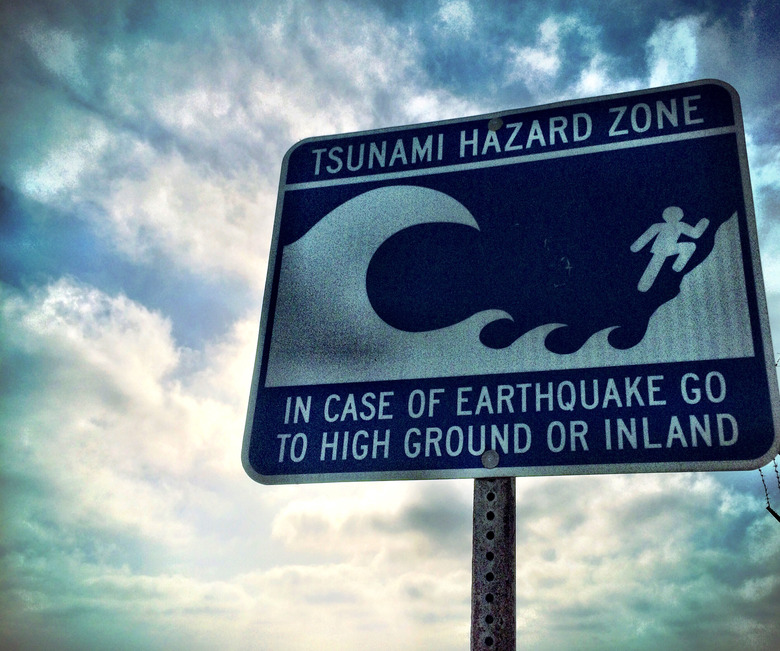All Types Of Tsunamis
A tsunami is a catastrophic sea wave that achieves landfall and causes destruction. Its source is a major geographic event under sea level, such as an earthquake, volcano eruption, or landslide. Though frequently called tidal waves, tsunamis have nothing to do with ocean tides. Many Pacific and Indian Ocean coastal countries maintain tsunami warning systems so local governments can establish timely evacuation routes. The warning systems specify what kind of tsunami may be moving toward land and provide evacuation information.
Local Tsunami
Local Tsunami
A local tsunami is a tsunami that causes damage in relatively close proximity to the tsunami-causing event. Specifically, the underwater event — usually an earthquake — that produces a local tsunami happens within 100 km, which is a little over 60 miles, of the land damage that results. These tsunamis can be devastating because the time between the underwater event and the arrival of the tsunami can be under an hour — and sometimes less than 10 minutes. This does not provide sufficient time for comprehensive evacuations.
Regional Tsunami
Regional Tsunami
A regional tsunami is one that causes damage from 100 km to 1,000 km from the underwater event that causes the tsunami. In some cases, more contained damages occur outside the 1,000 km perimeter. Regional tsunamis provide slightly more warning time than local tsunamis, making landfall between one and three hours of the event that causes them. Within the 1,000 km area, just one to three hours may not provide enough time for people to evacuate safely.
Distant Tsunami
Distant Tsunami
A distant tsunami, also called a tele-tsunami or ocean-wide tsunami — originates with an exceptionally powerful and destructive event more than 1,000 km away from landfall. Though a distant tsunami may first appear like a local tsunami, it travels across wide swathes of ocean basin. There is more time to evacuate and escape a distant tsunami, but it also covers a larger mass of land and tends to cause extensive and widespread destruction.
The Distant Tsunami of 2004
The Distant Tsunami of 2004
The most devastating tsunami on historical record occurred in the Indian Ocean on December 26, 2004. On that day, a massive underwater earthquake — measuring at 9.1 out of 10 on the Richter scale — occurred off the northern coast of Sumatra, Indonesia. The resulting distant tsunami hit the coasts of Indonesia, Thailand, Malaysia, India, Sri Lanka, Myanmar, the Maldives, and even countries in East Africa. At least a quarter of a million people died, with the worst damage concentrated in India, Indonesia, Sri Lanka,Thailand and the Maldives.
References
- Encyclopedia Britannica: Tsunami
- Caribbean Disaster Emergency Management Agency: Tsunami Types
- National Weather Service Pacific Tsunami Warning Center: Frequently Asked Questions
- Caribbean Disaster Emergency Management Agency: Glossary — Regional Tsunami
- Caribbean Disaster Emergency Management Agency: Glossary — Distant Tsunami
- Encyclopedia Britannica: Indian Ocean Tsunami of 2004, Introduction
Cite This Article
MLA
Lee, Christina. "All Types Of Tsunamis" sciencing.com, https://www.sciencing.com/types-tsunamis-8492514/. 19 April 2018.
APA
Lee, Christina. (2018, April 19). All Types Of Tsunamis. sciencing.com. Retrieved from https://www.sciencing.com/types-tsunamis-8492514/
Chicago
Lee, Christina. All Types Of Tsunamis last modified March 24, 2022. https://www.sciencing.com/types-tsunamis-8492514/
